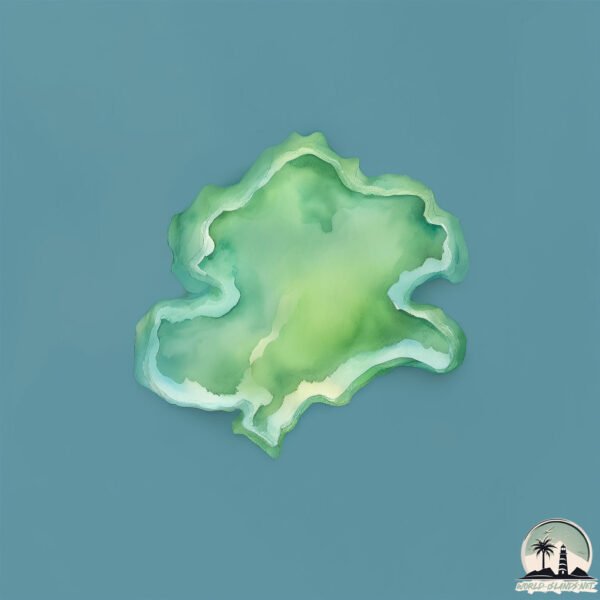Pyeong Do

Welcome to Pyeong Do, a Temperate island in the Japan Sea, part of the majestic Pacific Ocean. This guide offers a comprehensive overview of what makes Pyeong Do unique – from its geography and climate to its population, infrastructure, and beyond. Dive into the details:
- Geography and Size: Explore the island’s size and location.
- Climate and Weather: Weather patterns and temperature.
- Topography and Nature: Uncover the natural wonders of the island.
- Infrastructure and Travelling: Insights on reaching, staying, and making the most of your visit.
- News and Headlines: Latest News.
Geography and size of Pyeong Do
Size: 0.756 km²
Coastline: 4.4 km
Ocean: Pacific Ocean
Sea: Japan Sea
Continent: Asia
Pyeong Do is a Tiny Island spanning 0.756 km² with a coastline of 4.4 km.
Archipel: –
Tectonic Plate: Amur – A minor tectonic plate in the region of the Amur River at the border of Russia and China, involved in complex interactions with the Pacific and Eurasian plates.
The geographic heart of the island is pinpointed at these coordinates:
Latitude: 34.24506266 / Longitude: 127.45061768
Climate and weather of Pyeong Do
Climate Zone: Temperate
Climate Details: Humid Subtropical Climate
Temperature: Hot Summer
Climate Characteristics: With continuous rainfall and hot summers, this climate is common in some coastal regions, supporting diverse vegetation.
Topography and nature of Pyeong Do
Timezone: UTC+09:00
Timezone places: Asia/Tokyo
Max. Elevation: 32 m
Mean Elevation: 22 m
Vegetation: Evergreen Needleleaf Forest
Tree Coverage: 5%
The mean elevation is 22 m. The highest elevation on the island reaches approximately 32 meters above sea level. The island is characterized by Plains: Flat, low-lying lands characterized by a maximum elevation of up to 200 meters. On islands, plains are typically coastal lowlands or central flat areas.
Dominating Vegetation: Evergreen Needleleaf Forest
Dominated by evergreen coniferous trees such as pines and firs, which retain their needle-like leaves throughout the year. These forests are often found in cooler climates. Pyeong Do has a tree cover of 5 %.
Vegetation: 4 vegetation zones – Diverse Island
Four distinct vegetation zones mark these islands as ecologically diverse. They might feature varied landscapes such as forests, beaches, grasslands, and rocky areas. Such diversity reflects the island’s complex ecological interactions and varied habitats, which can support a rich array of wildlife and plant species.
Infrastructure and Travelling to Pyeong Do
Does the island have a public airport? no.
There is no public and scheduled airport on Pyeong Do. The nearest airport is Yeosu Airport, located 68 km away.
Does the island have a major port? no.
There are no major ports on Pyeong Do. The closest major port is YOSU, approximately 63 km away.
The mean population of Pyeong Do is 454 per km². Pyeong Do is Moderately Inhabited. The island belongs to South Korea.
Continuing your journey, Oenarodo is the next notable island, situated merely km away.
[ENG SUB] 평석뿐희지ㅣP들의 제주도 여행VLOG!!🍊ㅣ희지랑 첫 여행! 첫 비행!✈️ㅣ커플여행ㅣ바다수영🤿ㅣ제주 야시장ㅣ재미와 감기 둘 다 얻은 둘..🤧ㅣ노을 맛집 금오름🌅
![[ENG SUB] 평석뿐희지ㅣP들의 제주도 여행VLOG!!🍊ㅣ희지랑 첫 여행! 첫 비행!✈️ㅣ커플여행ㅣ바다수영🤿ㅣ제주 야시장ㅣ재미와 감기 둘 다 얻은 둘..🤧ㅣ노을 맛집 금오름🌅](https://i.ytimg.com/vi/_TCBklaexXg/mqdefault.jpg)


South Korea is classified as Emerging region: MIKT: Mexico, Indonesia, South Korea, and Turkey – Economies recognized for their development potential and emerging market status. The level of income is High income: OECD.
News – Latest Updates and Headlines from Pyeong Do
Stay informed with the most recent news and important headlines from Pyeong Do. Here’s a roundup of the latest developments.
Please note: The data used here has been primarily extracted from satellite readings. Deviations from exact values may occur, particularly regarding the height of elevations and population density. Land area and coastline measurements refer to average values at mean high tide.
